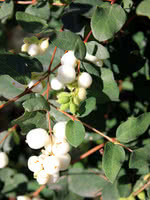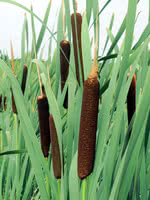Mon-Fri 9am - 5pm Mountain time
Common Snowberry vs Common Cattail
Symphoricarpos albus
Typha latifolia
CUSTOM GROW
Common Snowberry is a small deciduous shrub with characteristic white to pink flowers and clusters of white fruit.
This North American native species is very adaptable, and can be used for erosion control in riparian and restoration areas. Snowberry's fruit attracts wildlife, and livestock can consume the berries without issue.
Cattail is found all across North America, growing next to water. Like other waterside plants, Cattail provides erosion control and forage for animals.
It is suitable for land reclamation. Cattail is able to tolerate cold weather and occasional flooding.
Common Snowberry Quick Facts
Common Cattail Quick Facts
Toxicity: berries toxic to humans

